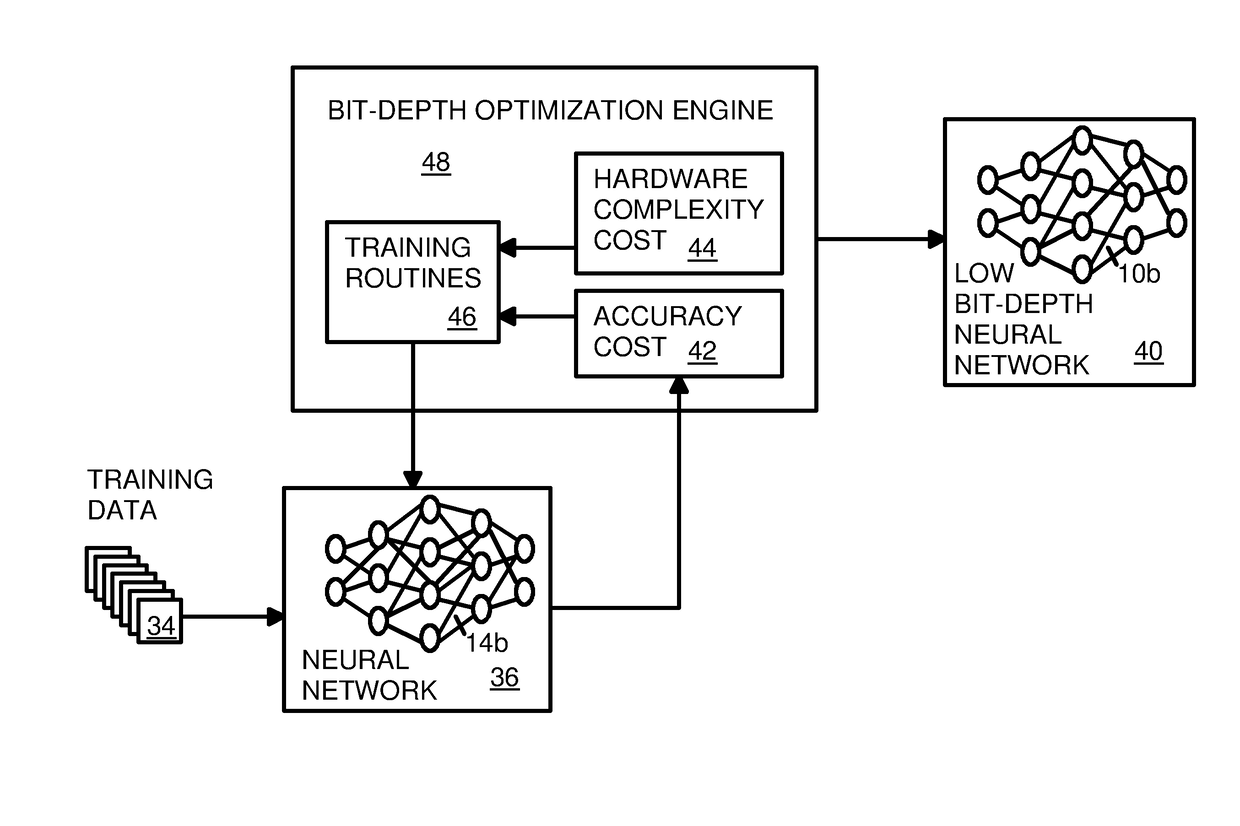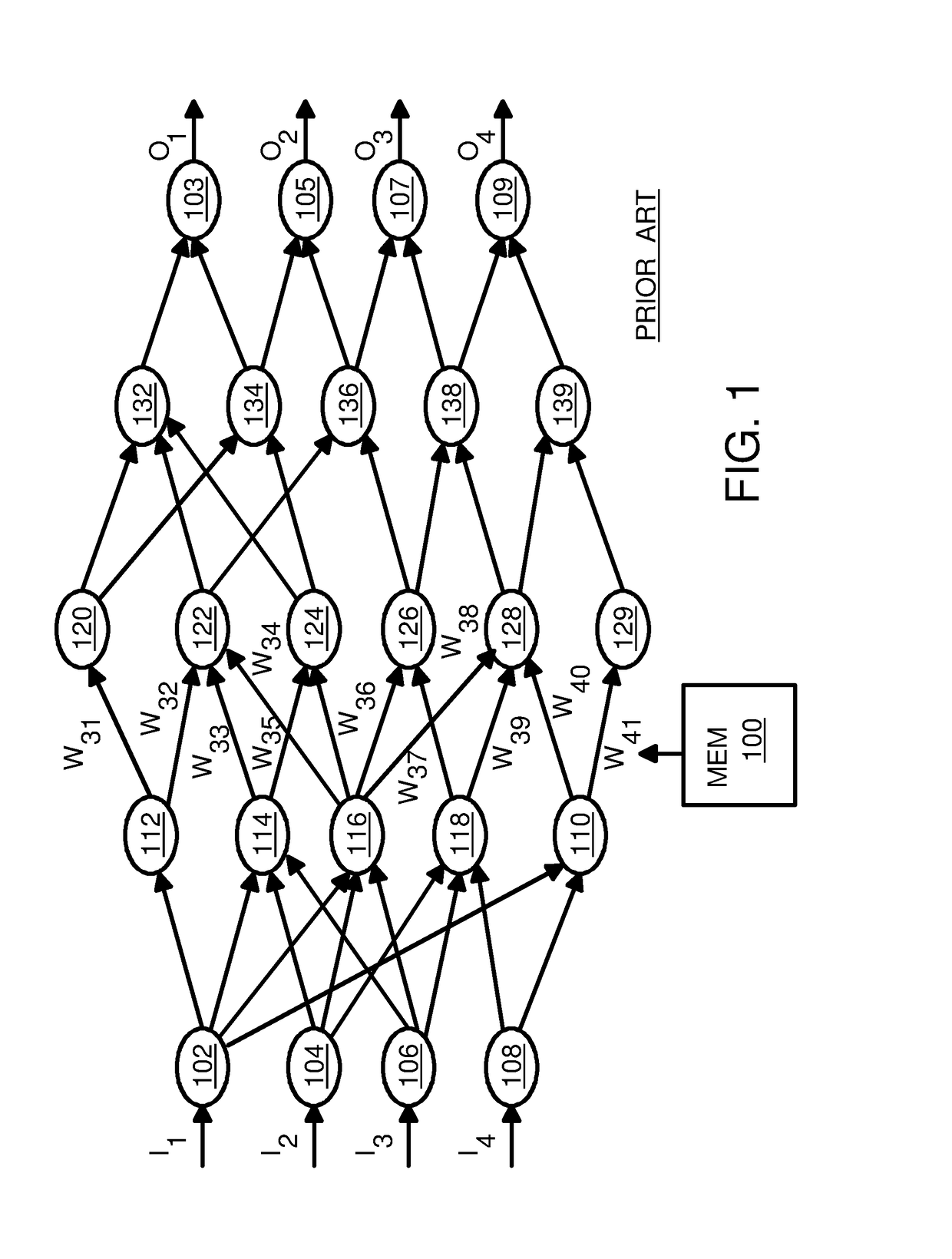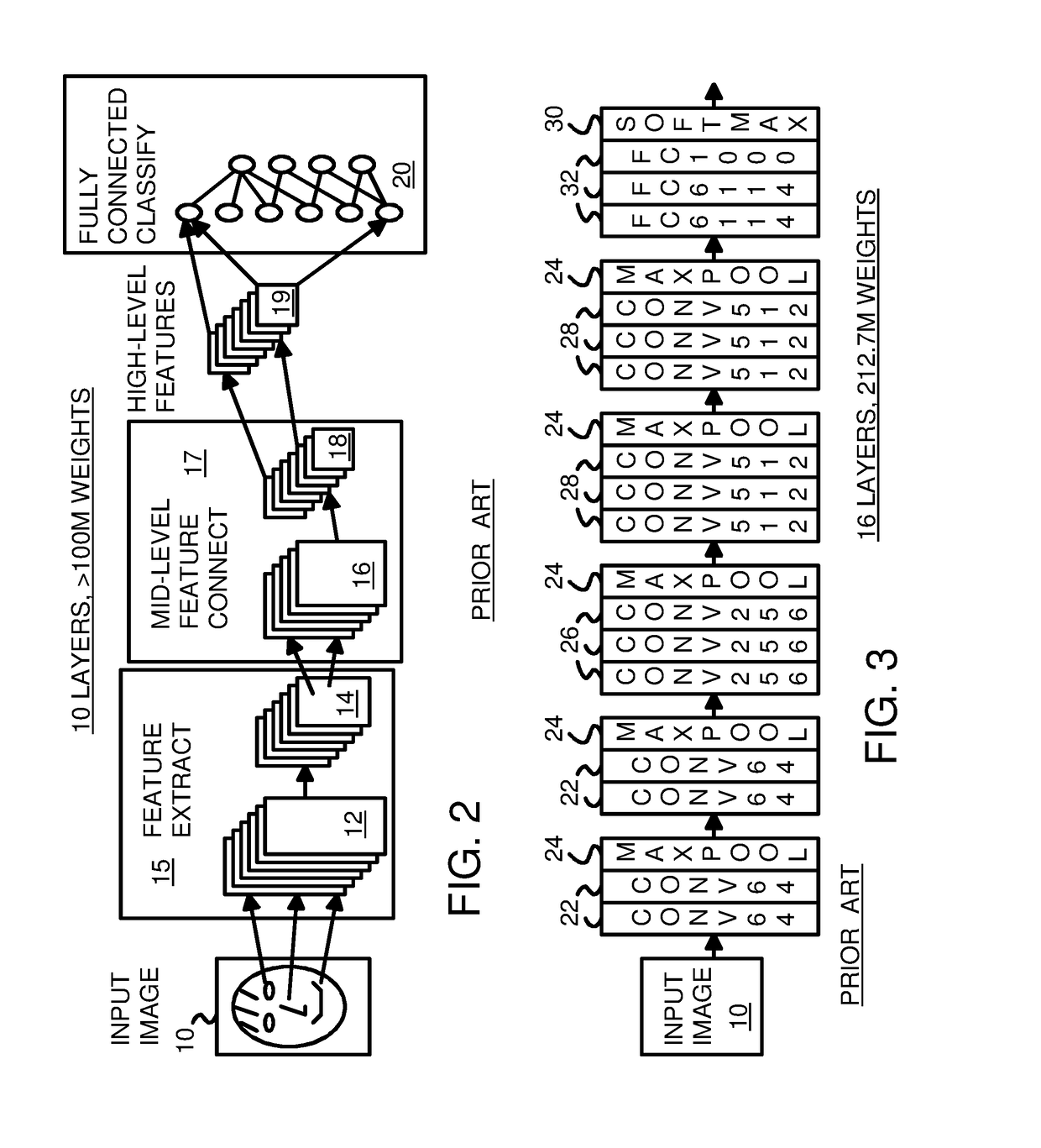Method and System for Bit-Depth Reduction in Artificial Neural Networks
a neural network and bit-depth reduction technology, applied in the field of neural networks, can solve the problems of high computational complexity of existing deep neural networks in order to increase the accuracy of neural networks, memory and power consumption constraints, and high power consumption of computing clusters and gpu's
- Summary
- Abstract
- Description
- Claims
- Application Information
AI Technical Summary
Benefits of technology
Problems solved by technology
Method used
Image
Examples
Embodiment Construction
[0028]The present invention relates to an improvement in neural networks. The following description is presented to enable one of ordinary skill in the art to make and use the invention as provided in the context of a particular application and its requirements. Various modifications to the preferred embodiment will be apparent to those with skill in the art, and the general principles defined herein may be applied to other embodiments. Therefore, the present invention is not intended to be limited to the particular embodiments shown and described, but is to be accorded the widest scope consistent with the principles and novel features herein disclosed.
[0029]The inventors have discovered that the size or bit depths of weights in a neural network can be reduced to reduce the complexity, cost, and size of the neural network while still optimizing accuracy. Specifically, a bit-depth complexity penalty is added during optimization to urge a neural network towards a smaller weights memor...
PUM
 Login to View More
Login to View More Abstract
Description
Claims
Application Information
 Login to View More
Login to View More - R&D
- Intellectual Property
- Life Sciences
- Materials
- Tech Scout
- Unparalleled Data Quality
- Higher Quality Content
- 60% Fewer Hallucinations
Browse by: Latest US Patents, China's latest patents, Technical Efficacy Thesaurus, Application Domain, Technology Topic, Popular Technical Reports.
© 2025 PatSnap. All rights reserved.Legal|Privacy policy|Modern Slavery Act Transparency Statement|Sitemap|About US| Contact US: help@patsnap.com



